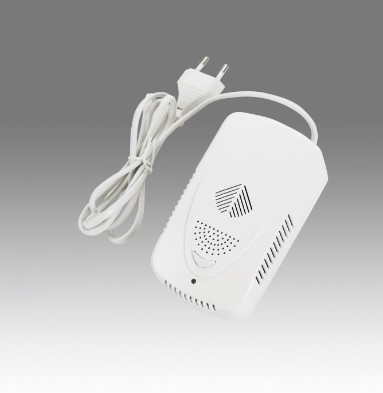In industrial production, chemical laboratories or othe […]
In industrial production, chemical laboratories or other places involving the use of gas, gas leakage and accumulation are a safety hazard that cannot be ignored. In order to ensure personnel safety and stable production, installing a gas alarm has become a necessary measure. As an efficient and reliable gas detection device, the installation of the HS-109B gas alarm in areas prone to leakage and accumulation is particularly important. The following will introduce in detail the installation points of HS-109B in these areas.

1. Understand the characteristics of the gas
Before installing the HS-109B gas alarm, you must first understand the characteristics of the target gas. The density, diffusivity and toxicity of different gases vary, which determines the distribution and accumulation location of the gas after leakage. By understanding the characteristics of the gas, you can determine the appropriate height and location for the alarm installation.
2. Determine the installation location
HS-109B gas alarms should be installed preferentially in places where gas is prone to leakage, such as pipeline interfaces, valves, flanges, etc. At the same time, alarms should also be installed in low-level or dead corners where gas is prone to accumulate, so that leaks can be detected in time and measures can be taken.
3. Choose the appropriate installation height
The choice of installation height should be based on the density of the gas. For gases lighter than air (such as methane, hydrogen, etc.), the alarm should be installed above the leak source so that the leaked gas can be detected in time. For gases heavier than air (such as hydrogen sulfide, carbon dioxide, etc.), the alarm should be installed close to the ground because such gases will accumulate in low places.
4. Ensure good ventilation
When installing the HS-109B gas alarm, ensure good ventilation around it. Poor ventilation will cause leaked gas to accumulate in local areas, affecting the detection effect of the alarm. Therefore, during the installation process, be careful to avoid installing the alarm in corners or closed spaces with poor ventilation.
5. Consider environmental factors
When installing the HS-109B gas alarm, some environmental factors also need to be considered. For example, the alarm should be avoided from being installed in environments such as high temperature, high humidity, and strong magnetic fields to avoid affecting its normal operation. At the same time, ensure that there are no obstacles around the alarm so that the gas can smoothly enter the alarm for detection.
6. Follow the installation specifications
When installing the HS-109B gas alarm, the relevant installation specifications should be followed. Operating in accordance with the specifications can ensure the installation quality and stability of the alarm. In addition, after installation, necessary testing and maintenance should be performed to ensure that the alarm can work properly and accurately detect gas leaks.